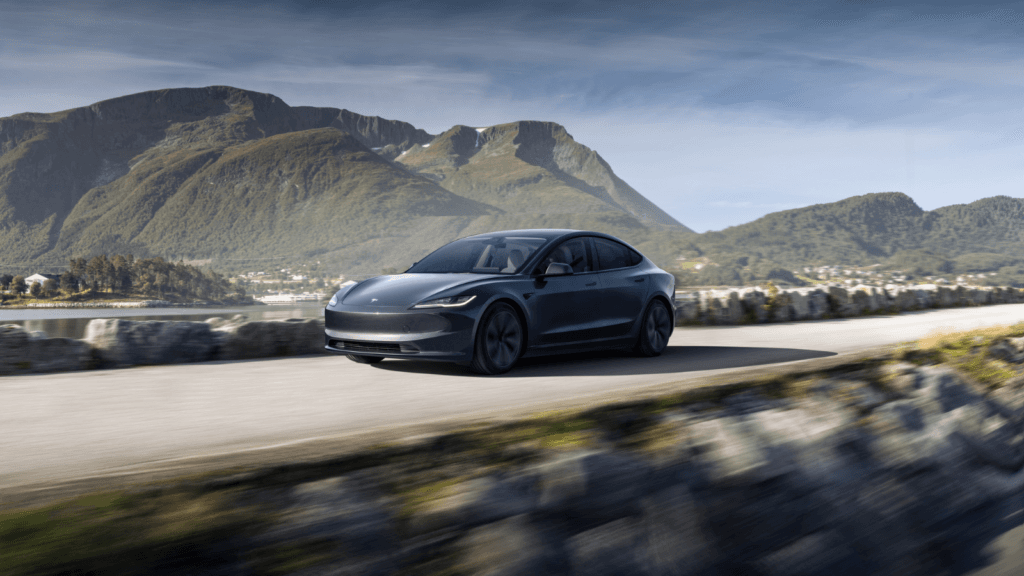Tesla Model 3 Emerges As America’s Most Cost-Effective Vehicle To Drive
Study Reveals The Tesla Model 3 Outpaces Competitors With 22% Lower Annual Operating Costs

In a comprehensive analysis that challenges conventional wisdom about luxury vehicle ownership costs including electric vehicles (EVs), the Tesla Model 3 has emerged as the most cost-effective vehicle to operate in the United States (U.S.).
Average Vehicle Operating Costs in the U.S.

This finding comes from an extensive study conducted by Self Financial, examining operating costs across the nation’s 50 best-selling vehicles from 2022 to 2024. To understand the significance of this finding, it’s important to first consider the typical costs of vehicle ownership in America. The study found that the average annual operating cost for a best-selling vehicle amounts to $6,462, with fuel costs representing the largest portion at 34.8% ($2,246) of total expenses. Maintenance follows at $1,633, insurance at $1,763, and annual fees and taxes at $820.
The Tesla Model 3’s performance in this context is remarkable, with total annual operating costs of just $5,061—representing a 22% reduction from the average. This efficiency stems primarily from the vehicle’s innovative electric powertrain. The Model 3’s annual energy costs are a mere $636, which is 71.68% lower than the study’s average fuel costs. This dramatic difference illustrates how EV technology can substantially reduce one of the most significant expenses of car ownership.
EV Powertrain Advantages

The cost advantages extend beyond fuel efficiency. The Model 3’s simpler mechanical design, with fewer moving parts than traditional internal combustion engines, translates to annual maintenance costs of $1,143—the lowest in the study and 30% below average. This exemplifies how EV architecture can reduce not just environmental impact but also ongoing maintenance requirements.
Higher Insurance and Tax Costs

However, the study reveals an interesting counterpoint in insurance costs. The Model 3’s annual insurance premium of $2,241 makes it the third most expensive vehicle to insure among those studied. Similarly, its annual fees and taxes of $1,041 exceed the study average. These higher costs reflect the vehicle’s premium positioning and advanced technology but are more than offset by savings in other areas.
For comparison, the second-place Hyundai Elantra, a traditional gasoline-powered budget sedan, demonstrates how different cost factors can balance out. While the Elantra’s annual insurance ($1,547) and fees ($508) are significantly lower than the Model 3’s, its higher fuel costs ($1,615) and maintenance expenses ($1,435) result in a slightly higher total annual cost of $5,104.
Other Tesla models also performed well in the study, with the Model Y securing seventh place with annual costs of $5,393, and the Model S ranking twentieth at $6,097. Notably, these were the only EVs among the top 50 best-selling cars, highlighting Tesla’s unique position in making EVs both popular and economical to operate.
At the opposite end of the spectrum, the Chevrolet Tahoe SUV demonstrated how traditional large vehicles can burden owners with higher operating costs, requiring $8,046 annually—nearly 60% more than the Model 3.
Implications for EV Ownership
These findings carry significant implications for consumers considering their next vehicle purchase. While the initial purchase price of EVs often exceeds that of comparable gasoline-powered cars, the substantial operating cost advantages revealed by this study suggest that the total cost of ownership equation may increasingly favor EVs, particularly for long-term ownership.
As a result, the study provides valuable insight into the evolving economics of vehicle ownership as the automotive industry transitions toward electrification, suggesting that technological advancement and operating efficiency can coexist with premium vehicle positioning and performance.
If you are looking for Tesla models, we can help you get started. Click Here to find the best deals near you. Want to learn more about EV? Thinking of buying an EV? Head over to EV.com and discover more.v
Comments
Categories
Subscribe for EV News and Reviews
AI Employee for Car Dealerships
Results in 30 days - Or We'll Give You Your Money Back

